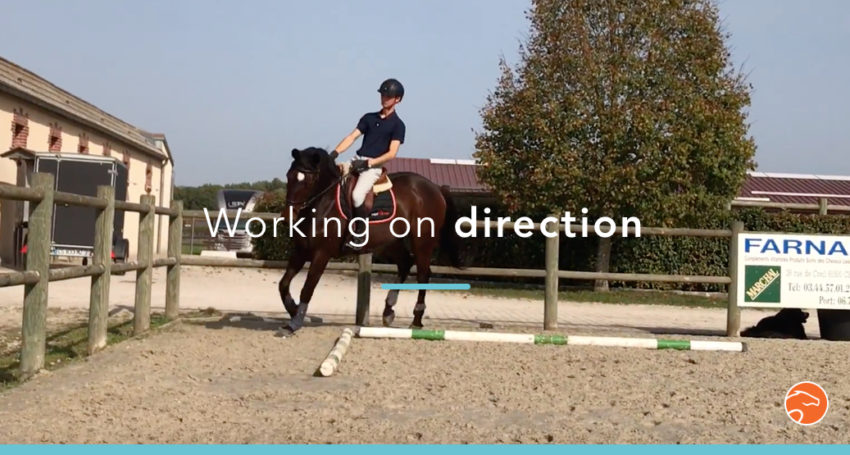
4 Exercises to Improve the Direction of Your Horse
In winter, what is a little annoying is that we are quickly locked up in the indoor arena. When we have a one the size of a football field it’s cool, but when we have a tiny one, it’s immediately less fun. So let’s take advantage of this situation of forced crampedness. Here are 4 exercises to improve direction on the flat.
📚 Must read blogpost: 4 Jumping Course Ideas to Do in an Indoor Arena
Table des matières
#1 – Increasingly Tightened Bends
It’s an exercise that allows you to work on control on smaller and smaller curves, but also straightness on more or less straight lines.
It consists in linking a half circle and then riding down the centerline, and especially to shrink the size of the half circle as you go. You can also make a small extension while riding down the centerline, and then collect back on the half-circle. This exercise is interesting to work at canter but also to work at walk and trot. It’s up to you!
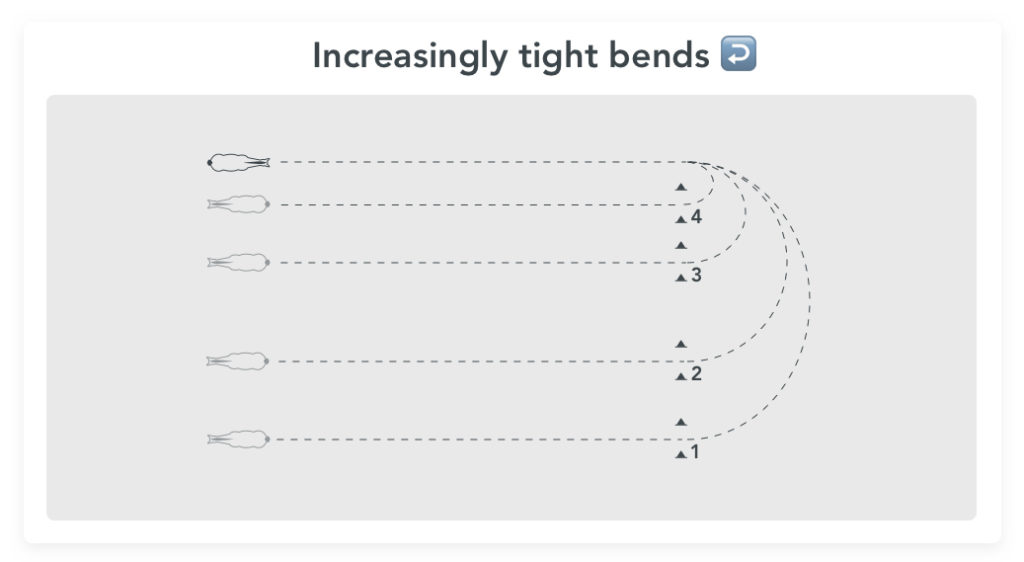
To succeed on this exercise, you need to:
- prepare your half circle by adapting the rhythm and amplitude to the diameter
- use both hands and both legs to make the half circle
- not to put too much bend on the half circle, it would be counter productive
- have your eyes fixed on a point in the distance, and that all along the centerline
- manage straightness with both hands and both legs
📲 Use Equisense Motion S to check that you have successfully completed the exercise. The goal is to keep a steady rhythm despite the alternation between circle and straight line. And if the elevation drops, it means that your horse is not holding themself enough!
⏩ Read also : 7 Exercises to prepare your Jump-Off
#2 – The perfect angle
A great classic exercise to improve the direction of the horse, but still good to work with! Place two poles at right angles 1m from the track.
The exercise simply consists of crossing the corner marked by the poles at trot or canter. What is interesting here is that the fact of materializing it like this really forces you to be precise, before, during and after the corner. It’s a bit more efficient than a stud.
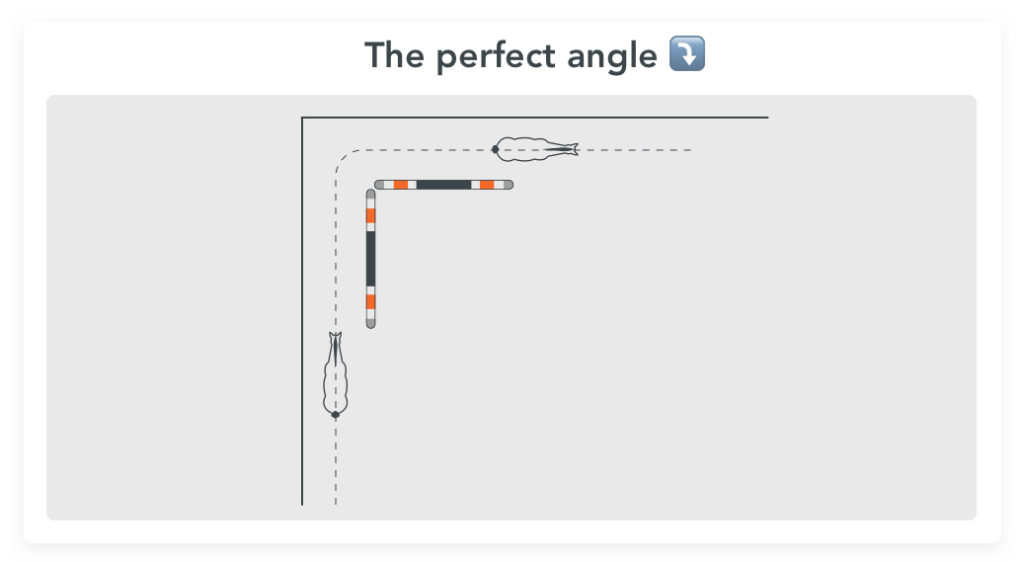
It seems simple like that, but in reality when you ride a lot by yourself you forget to have the rigor to go into the corners. We lose the habit and the horses too. So a little booster shot from time to time doesn’t hurt.
Moreover, it is an exercise that you can insist on until the runs are perfect.
To succeed on this exercise, you need to:
- prepare for the corner by adapting the horse’s rhythm and balance
- use your outer hand and inner leg well for the corner passage
- stay soft in the hand
- keep the same rhythm in the corner
Once you have a horse that holds themself, does not crunch down in the corner, stays supple in their mouth and maintains their gait before, during and after the corner, it’s a win!
📲 Also use Equisense Motion S to check that you have successfully completed the exercise. If the rhythm increases and the elevation drops, your horse has rushed and is off-balance in the corner.
#3 – Halt when Exiting Corner
Once you have done the perfect angle exercise you can combine it with a halt when exiting corner. You’ll see that it’s not that simple!
Thinking about making a stop at the exit of the corner forces you to prepare the corner itself. You will have to perfectly master the lateral and longitudinal balance in the corner, otherwise the halt won’t be possible. The start after the halt must be energetic!
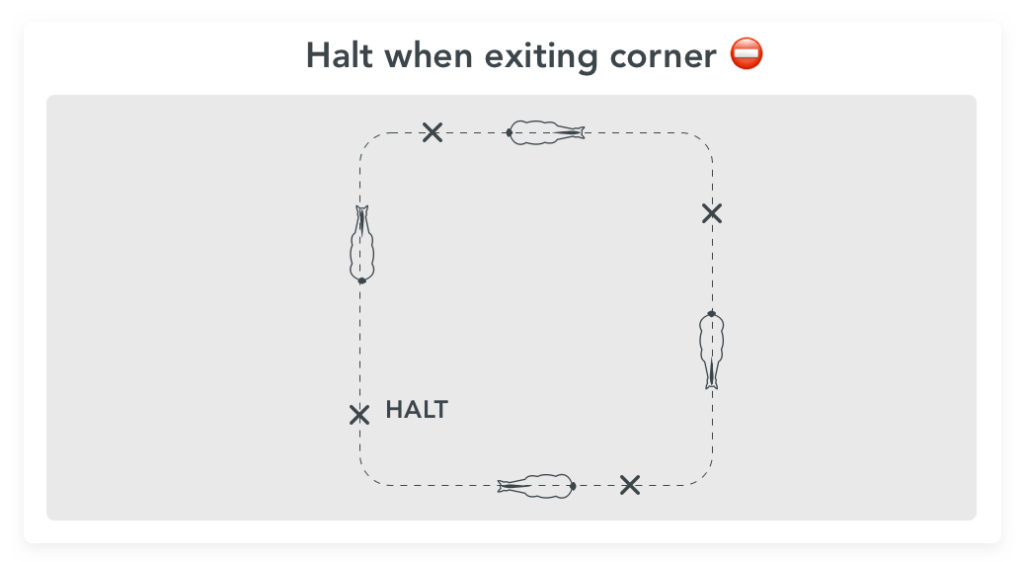
Once the passage of the corner is acquired and the halt is made in softness and flexibility, it’s a win! Be careful that your horse does not lose their energy in the corner!
📲 Also use Equisense Motion S to check that you have successfully completed the exercise. The elevation should increase as you go! Especially if the start is energetic.
📚 To be read: 3 Exercises to Improve Your Dressage in Line with the Training Pyramid
#4 – The Triangle
Last exercise to improve direction: the triangle.
Arrange 3 poles in the shape of a triangle, taking care to put 3m between the tip and the base. First approach the device by the base to get your horse used to it, then by the top (this is where it is the most interesting by the way).
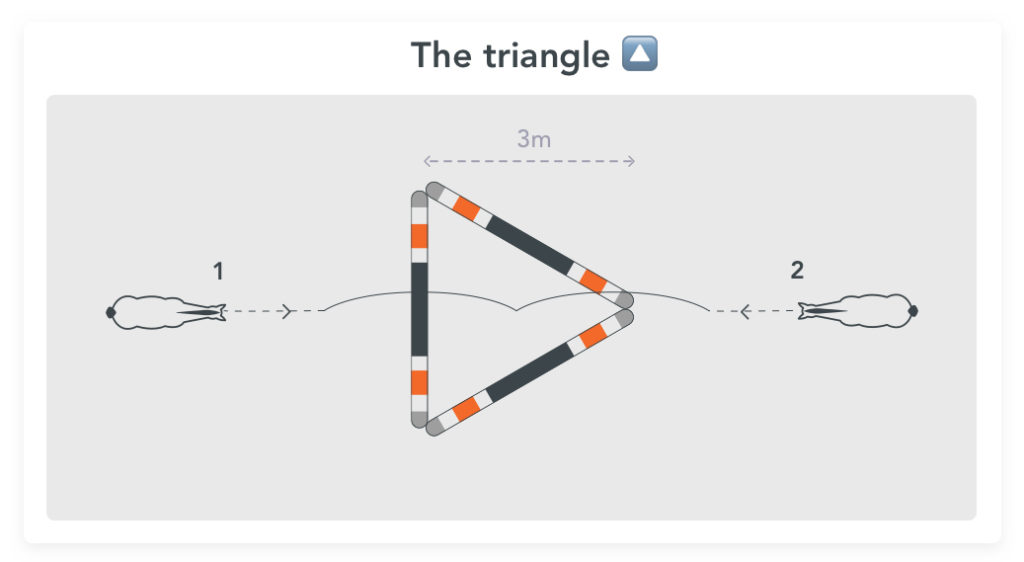
The top-down approach will require you to have a true mastery of direction, franchise and straightness. Be careful not to cheat, you must also go straight after the device. You can also put studs on yourself to force you to go straight.
To succeed on this exercise, you need to:
- adapt the pace (rhythm and amplitude) to the passage of the device (according to your horse)
- work well on the curve (lateral and longitudinal balance) when approaching the device
- not to bend the horse: to go straight, they must be straight!
- go straight until the end!
- keep the same rhythm throughout the device
- be flexible in the hand and in the seat
Once you have a horse that passes through the device without accelerating and without losing balance in the approach, and you manage to stay flexible in your hand and in your seat, then that’s it!
📚 Read too : 4 Dressage Exercises to Gain Control and Precision
📲 Also use Equisense Motion S to check that you have successfully completed the exercise. If the rhythm increases and the elevation drops, your horse has accelerated and lost balance on the device!
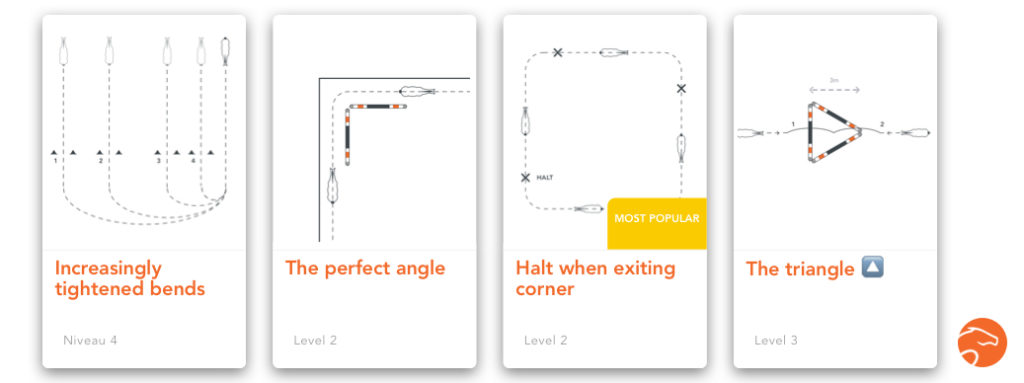
Here are 4 exercise ideas to improve the direction and control of your horse. It is really a point that we quickly forget to work on when we are alone and yet it has a lot of virtue, especially that of making us think of something else than the attitude of the forehand. But a well-balanced horse, reactive to our aids and which pushes itself, is already a very good basis to have a horse on your hand!
All of these exercises and many more can be found for free in the Equisense app, which is available for free for iOS and Android !
Don’t hesitate to download it!

See you soon for a next article
Camille Saute
Cofounder of Equisense
These are excellent!